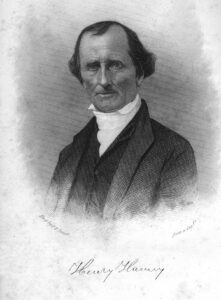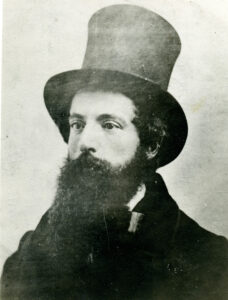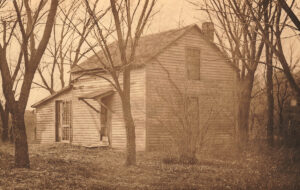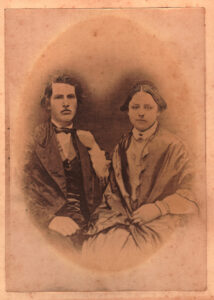
HARVEYVILLE
In territorial days this community was known as the Dragoon or Harvey Settlement. It was located in the extreme southeast corner of the county, near the borders of Shawnee, Osage and Lyon counties. Council City (Burlingame), part of Shawnee County in territorial times, is 8 miles to the southeast. The main route of the Santa Fe Trail passed through the county several miles south of Harveyville.
This community began in May of 1854, only weeks after passage of the legislation that created the territory. George M. Harvey took the first claim here, which is credited as being the first in Richardson County. He was also the first Quaker to settle in the territory. The Quakers had been one of the first groups to oppose slavery and many families were involved in the Underground Railroad. Within a few months his brother Samuel and his parents Henry and Ann Harvey and other family members (Madden, Akin) arrived, making their own claims.
The Harvey family had been involved with the anti-slavery movement and the Underground Railroad when they lived in Ohio. Their Kansas log house soon became a refuge for slaves seeking freedom in Canada. Their farm is now a registered Network to Freedom site. The existing house was built around 1900, most likely near the site of the Harvey cabin. Charles Leonhardt, author of the manuscript, The Last Train, an account of a June 1860 trip, noted that the Harvey home was a station used for special situations when extreme caution was required. Its out of the way location was an advantage. Stephen Spear, who arrived in the fall of 1857, writes in his history of the settlement that after hiding in the Harvey cabin, fugitive slaves were taken by wagon at night to the farm of Enoch Platt near Wabaunsee.
Spear’s brother, Daniel also spoke about the UGRR in the community. At a gathering of the Old Settlers Association in 1899, he said that Jehu Hodgson was the local conductor of the railroad. Jehu and Mary Loy Hodgson’s son Frank wrote a colorful account of his parent’s UGRR activity titled “Charlie the Slave”. He relates that on one occasion the Harvey cabin was under suspicion, so the Hodgson’s were caring for a slave named Charlie until the time was right to move him north. One day a neighbor came calling after breakfast. “The caller was a stayer and did not go until nearly noon.” The family sat nervously, expecting their ruse would be discovered. It was not, and Frank tells how his father eventually hid Charlie and a woman and her five children in a wagon disguised as a load of corn. He took them north through Topeka and on to a station near Leavenworth.
The Harveyville Cemetery contains the graves of Underground Railroad participants Ann Harvey, Jehu and Mary Hodgson (Thomas), and Morris Walton. Morris Walton drove the team of horses loaned by Dr. Sabin in Leonhardt’s account of The Last Train.






